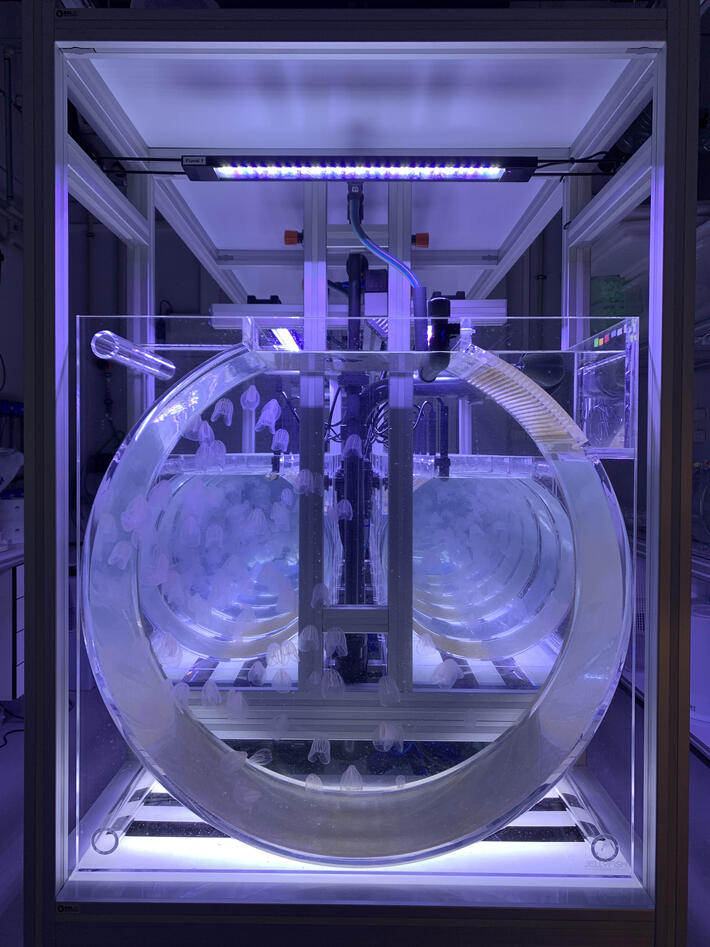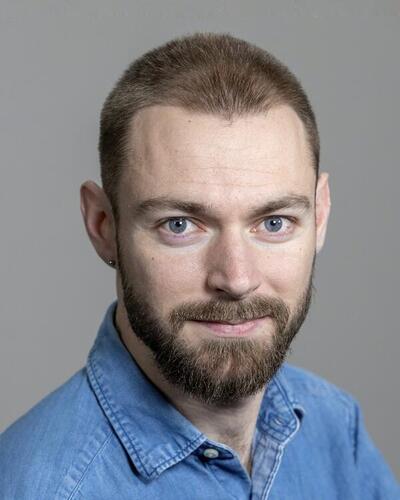Ctenophora Facility
The ctenophore Mnemiopsis leidyi (sea walnut) in our laboratory in Bergen, Norway.
Main content
Ctenophore facility - Burkhardt Group
The ctenophore culture facility at the Sars Centre supports research activities developed by the Burkhardt group. The facility maintains a stable culture of the comb jelly Mnemiopsis leidyi, also known as the sea walnut.
Our group is studying the origin and evolution of synaptic proteins. We use a comparative approach and work with choanoflagellates, sponges and ctenophores as model organisms
- Pawel Burkhardt
Ctenophores are gelatinous animals, and most species are holoplanktonics. The maintenance of these animals requires the use of specific techniques.
Several hundred specimens belonging to twenty generations are currently stored in 26 different kreisel tanks from 25L to 180L, distributed in 4 independent systems. Kreisel is a cylindrical aquarium with an inlet and outlet water chamber separated by a screen. The water inlet is provided by a spray bar with holes creating a circular flow that moves comb jelly away from the screen without danger of being sucked down the drain. The design of the kreisel aquarium allows us to maintain the ctenophores in optimal conditions.

This facility is supplied with natural seawater pumped from 200 m depths out of the fjord of Bergen, at a distance of a few kilometers from the shore. Temperature, salinity, pH, and photoperiod are constantly monitored. Animals are fed daily with different planktonic prey, including frozen copepods, live Artemia, and rotifers. The size supplied is selected according to the culture’s life cycle stage. Depending on the needs of the research group, ctenophores are induced on demand in order to produce eggs and recently hatched larvae. Occasionally, five other ctenophore species - Beroe cucumis, Beroe gracilis, Bolinopsis infundibulum, Euplokamis dunlapae, and Pleurobrachia pileus - are also kept or bred at the facility.


